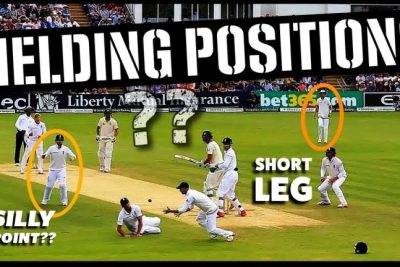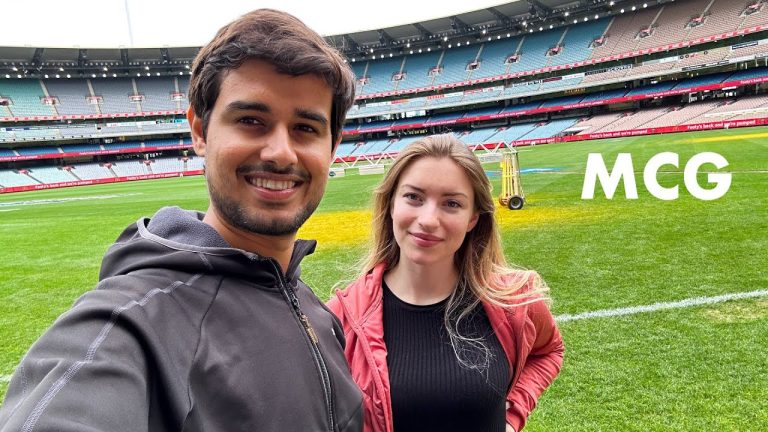Cricket fielding positions and roles play a crucial role in shaping the game’s dynamics. From the strategic placement of players to their specific responsibilities, every position on the field has a unique purpose. Whether it’s the agile and nimble slip fielder ready to pounce on any edge or the athletic and acrobatic boundary rider, each player contributes to the team’s success. In this article, we delve into the fascinating world of cricket fielding, exploring the different positions and their key roles, highlighting the importance of a well-coordinated and efficient fielding unit. Get ready to unravel the secrets behind a successful defense on the cricket field.
- Wicketkeeper: The wicketkeeper is positioned behind the wickets and is responsible for catching the ball and stumping the batsman if they leave their crease.
- Slip fielders: Slip fielders stand behind the batsman on either side of the wicketkeeper. Their role is to catch any edges or deflections from the bat.
- Mid-off and Mid-on: These fielders are positioned on either side of the pitch, slightly closer to the batsman. They are responsible for stopping drives and cuts played by the batsman.
- Long-on and Long-off: These fielders are positioned near the boundary on either side of the pitch. Their role is to stop the ball from reaching the boundary, especially when the batsman hits a lofted shot.
What positions are there on a cricket field?
On a cricket field, there are various positions strategically placed to optimize fielding opportunities. Some of these positions include Slip, where multiple slips are positioned next to each other, numbered outwards from the wicket-keeper, collectively known as the slip cordon, to catch balls that just edge off the bat. Additionally, there are positions like Gully, Fly slip, Leg slip, and Leg gully, each with their own specific roles and responsibilities in the field. These positions, along with the short and long off, short and long leg, cover point, and mid-wicket, form the intricate web of fielders aiming to provide effective support to the bowler and restrict the batting team’s scoring opportunities.
What is the reason behind its name, silly mid on?
Have you ever wondered why it’s called silly mid-on? Well, the names mid-off and mid-on actually derive from their position on either side of the wicket, right in the middle of the pitch. However, the addition of the word ‘silly’ to certain positions, such as silly mid-on, hints at the inherent danger involved in fielding there. After all, it would be quite silly to willingly put yourself in harm’s way, as these positions require you to stand dangerously close to the batsman and risk injury from a powerful shot.
In the game of cricket, the term silly mid-on might pique your curiosity. But fear not, for there is a logical explanation behind its peculiar name. The terms mid-off and mid-on simply indicate the fielding positions situated in the middle of the pitch. However, the term ‘silly’ is used to emphasize the potential folly of fielding in such a position. Standing just a few feet away from the batsman, the fielder at silly mid-on is exposed to the risk of injury due to the sheer power of the bat. So, next time you see a fielder at silly mid-on, remember the bravery and caution required to play in such a seemingly absurd position.
What is the position of the best fielder in cricket?
The best fielder in a cricket team is typically positioned at point, showcasing their exceptional skill and agility. With their sharp reflexes and keen anticipation, they are strategically placed to swiftly intercept any powerful shots played through the off side. The fielder at point not only serves as a crucial defensive asset but also plays a pivotal role in setting the tone for the team, inspiring confidence and instilling a sense of security among their teammates.
Unleash Your Inner Fielding Star: Unraveling the Secrets of Cricket Roles and Positions
Unleash Your Inner Fielding Star: Unraveling the Secrets of Cricket Roles and Positions
1. Enhance your cricket prowess by understanding the intricate roles and positions that make up this beloved sport. From the nimble wicketkeeper to the agile slip fielder, each player has a unique responsibility on the field. Discover how these roles intertwine to create a seamless defensive strategy, ensuring your team’s success in every match.
2. Dive into the world of cricket positions and unlock the secrets behind each player’s role. The versatile all-rounder acts as the backbone of the team, excelling in both batting and bowling. Meanwhile, the steadfast bowler aims to outwit the opposing batsmen with their varied deliveries. Explore these fascinating positions and delve into the strategies that make cricket a captivating game of skill and strategy.
3. Unleash your inner fielding star and become an indispensable asset to your cricket team. As a fielder, master the art of quick reflexes and accurate throws to keep the opposition on their toes. From the deep point to the silly mid-off, each fielding position requires a specific set of skills. Embrace the challenge and learn how to shine in the field, making crucial catches and saving vital runs for your team.
Cricket Fielding Decoded: Mastering the Art of Roles and Positions
Cricket Fielding Decoded: Mastering the Art of Roles and Positions
In the game of cricket, fielding is an art that requires precision, agility, and strategic thinking. Each player on the field has a specific role and position that contributes to the overall success of the team. The wicketkeeper, positioned behind the stumps, acts as the team’s last line of defense, swiftly catching any balls that come their way. The slip fielders, stationed close to the wicketkeeper, are responsible for grabbing any edges off the bat. The boundary riders, positioned towards the outfield, have the crucial task of preventing runs by chasing after the ball and executing accurate throws. The point fielder, placed on the off side, is responsible for stopping any shots played square of the wicket. The mid-on and mid-off fielders, positioned on either side of the pitch, play a dual role of stopping straight drives and running out batsmen. Finally, the cover fielder, stationed near the batsman’s off side, is vital in stopping any shots played towards the covers region. By understanding and mastering these roles and positions, a cricket team can enhance their fielding strategy and increase their chances of victory.
From Novice to Fielding Pro: Unveiling the Essential Roles and Positions in Cricket
From Novice to Fielding Pro: Unveiling the Essential Roles and Positions in Cricket
Cricket, a game steeped in tradition and strategy, requires a diverse array of players to fulfill specific roles on the field. At the heart of every successful cricket team lies a formidable batting lineup, comprising of opening batsmen, middle-order batsmen, and the crucial role of the wicket-keeper. Opening batsmen set the tone for the innings, facing the new ball and withstanding the early onslaught from the opposition’s fast bowlers. The middle-order batsmen provide stability and consistency, with the responsibility of building and maintaining partnerships. Lastly, the wicket-keeper not only contributes with their batting skills but also plays a pivotal role in catching and stumping the opposition’s batsmen, requiring exceptional reflexes and agility.
Fielding, an often-underestimated aspect of cricket, can make or break a team’s performance. The slip fielder, positioned close to the wicket-keeper, specializes in catching the ball when it edges off the bat, a skill that demands immense concentration and quick reflexes. The boundary fielders, stationed near the edge of the playing area, aim to prevent the ball from crossing the boundary line, showcasing their athleticism and throwing accuracy. Additionally, the long-on and long-off fielders are strategically placed to cover vast areas of the field, ensuring the opposition’s batsmen find it challenging to score boundaries. These essential roles and positions in cricket highlight the immense skill and coordination required to excel in this captivating sport.
In the dynamic game of cricket, fielding positions and roles play a pivotal role in shaping the outcome of a match. From the agile wicket-keeper to the strategic boundary rider, each player’s position comes together like a symphony, working in perfect harmony to defend runs and take wickets. With precision and coordination, fielders showcase their athleticism and expertise, seamlessly complementing the bowler’s efforts. As spectators marvel at their acrobatic dives and lightning-fast reflexes, it becomes evident that fielding is not just a mere aspect of the game; it is an art form in itself. The fielding positions and roles in cricket are a testament to the sport’s richness and complexity, captivating fans worldwide and ensuring that the game remains as exhilarating as ever.


